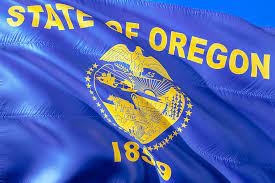
Oregon became the second state to require producers of packaging, paper products and food service ware to share responsibility for supporting in-state recycling programs when Gov. Kate Brown signed SB 582, known as the Plastic Pollution and Recycling Modernization Act, into law Aug. 6. Sen. Michael Dembrow and Rep. Janeen Sollman were the chief sponsors of the bill.
Maine Gov. Janet Mills signed a similar extended producer responsibility (EPR) law into effect July 12.
Under Oregon’s new law, brand owners selling packaging, paper products and food service ware into Oregon will join stewardship organizations and pay fees to support the improvement and expansion of recycling programs and infrastructure statewide. This new packaging EPR program is intended to reduce the impacts of waste on the environment and human health, keep plastics out of rivers and oceans and take steps toward addressing the inequitable impacts of the waste system on vulnerable communities, legislators say.
“With this new law, Oregon ratepayers will be provided a much more accessible, responsible and stable recycling system,” says Scott Cassel, CEO and founder of the Product Stewardship Institute (PSI), which advocates for the promulgation of responsible recycling through EPR legislation. “It will also provide producers with the financial incentive to make their packaging more sustainable, and local communities with funding for reuse and waste prevention programs.”
Under the new system, consumer brand payments will cover roughly one-quarter of the costs of a modernized recycling system. In contrast to Maine’s law, which covers all recycling costs, producers under Oregon’s law will not cover the costs of collection, which will continue to be paid for by residential and commercial ratepayers. Local authorities will maintain operational control for collection services and public education programs, while producer funding will enable improvements such as recycling facility upgrades, broader collection services and more accessible educational resources.
Producers will finance their obligations through fees on covered products that they pay to stewardship organizations. These fees will be based on factors such as recyclability, use of postconsumer recycled content and the life cycle impacts of the materials they use. The largest producers also will be required to perform lifecycle assessments on 1 percent of their products every two years.
The new law will create a uniform statewide collection list and expand recycling access to multifamily housing and those living in rural and remote communities. A new multistakeholder group, known as the Oregon Recycling System Advisory Council, will advise the Oregon Department of Environmental Quality (DEQ) and stewardship organizations on key elements of the new program, including producer implementation plans.
Oregon’s law promotes equity and environmental justice by requiring Oregon DEQ to conduct regular studies on access to recycling and enacting new permitting and certification requirements for processors to provide living wages and benefits for their employees. Recycling processing facilities will also be required to meet new performance standards, such as for material quality and reporting, and will share responsibility with consumer brands for ensuring that collected materials reach socially and environmentally responsible end markets. The costs of meeting these new standards will also be offset by producer funding.
“It’s encouraging to see the extensive provisions aimed at addressing recycling inequities and environmental justice in Oregon’s new law,” says Sydney Harris, policy and programs manager and packaging lead at PSI. “We have these elements in PSI’s policy model and hope to see them included in all packaging EPR legislation.”
PSI has promoted EPR for packaging for the past 15 years and developed a model bill that has informed legislation introduced in eight states, including Oregon, over the past two years. Oregon’s bill emerged from a multiyear stakeholder engagement process, led by Oregon DEQ, to gather input and identify solutions best suited to the state.
Oregon is one of the nation’s leaders when it comes to successful EPR programs. Working with PSI, state and local governments, the paint industry, and other key players, Oregon was the first state in the country to pass EPR legislation for paint in 2009. It also has EPR programs for electronics and pharmaceuticals, as well as a decades-long EPR program for beverage containers.






